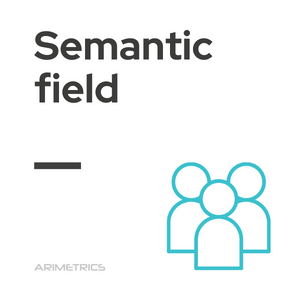
Definition:
A semantic field is a technique used when writing with the aim of creating or maintaining a certain more concrete image in the minds of users. It is done by utilizing keywords that are related to each other, either through similar meanings or through a more abstract relationship, for example, a topic.
It is a concept taken from the Language, which defines a group of words that share the same content, but that are at the same time words whose meanings are different from each other.
In Marketing, if we plan several campaigns about cars, in addition to talking about them, it will be very useful to include other words related by their meaning, such as road, tourism, vehicles, car brand, pedestrians, trips, etc.
The relationship between the elements of a semantic field can be:
- Hyponymy: this is the set of words that can be framed in a classification of greater amplitude. For example, rose, carnation or poppy are flower hyperonyms.
- Meronymy: they are words from the same semantic field that call parts of something else. In this case, fingers is a meronym of hands.
- Linear: are elements that follow a series in a linear way (child, adolescent, youth, adult, elderly) or circular (Monday, Tuesday, Wednesday, etc.).
The importance of the semantic field
The arrival of the Hummingbird, the algorithm that Google began to use from 2013, was a determining factor in the development of what is known as the semantics of marketing. The main novelty of the new algorithm is that it is not limited to performing its searches by keywords and the synonyms of them, but begins to take into account the context of the search, thus improving the user experience.
The proliferation of voice searches that has occurred in parallel with the development of new technological devices has led to an evolution in the way of asking that conditions search engines. For this reason, Google has begun to consider semantic relationships, for example, variations in gender (male and female), singular and plural, different verb forms or linguistic variations (different expressions with the same meaning).
The evolution in searches that Hummingbird pointed out was implemented in 2015 in RankBrain,the algorithm that learns from artificial intelligence to deliver more relevant results. The key to both is Latent Semantic Indexing (LSI), which Google uses to find the words, phrases, and even concepts related to the main keyword.
With all these novelties, the search engine par excellence tries to reward quality texts in content marketing and penalize repetitions, even when synonyms are used.
The semantic field has a growing importance in the search through personal assistants, who must take into account a conversational language and know how to place in a context what the user indicates.
